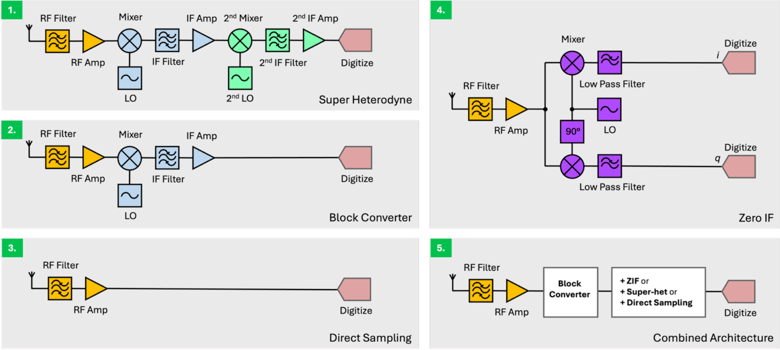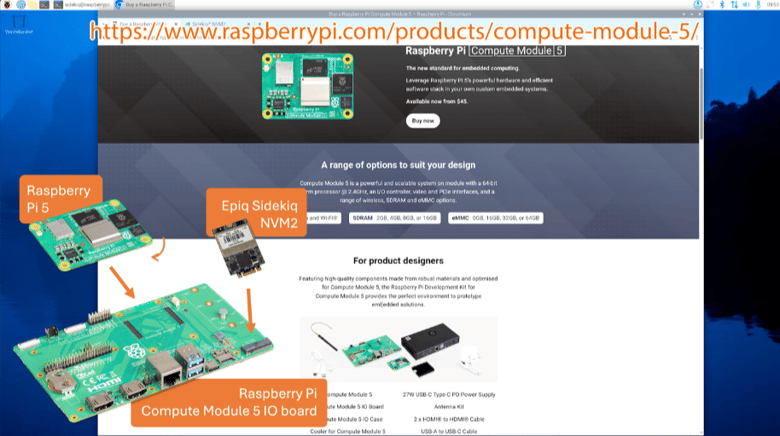Enabling the Development of a Long-Range Mesh Network Radio with Sidekiq Z2 Software-Defined Radio (SDR)
John Orlando
07/14/21

Radio transmission in hard-to-reach or dangerous areas without existing network infrastructure requires a radio platform that can cover long distances, accommodate high throughput, and withstand the elements.
Testing military applications does not always happen in the controlled, predictable surroundings of a test lab. Weapons systems testing or combat training, for example, require real-world conditions to ensure realistic assessment of equipment operation and user proficiency. The Department of Defense (DoD) has test ranges that often span tens or even hundreds of square miles to represent actual combat conditions in terms of scale and potential environmental hazards. Of course, the benefit of running these field tests is to obtain data on performance and functionality, data which will identify what might need fixing or issues that can be improved upon. Not being able to recover the data collected during these tests undermines the whole reason to run the tests in the first place, so test data retrieval becomes a mission-critical issue in the field. And yet, in the majority of simulated field situations, it is not safe or even physically possible for an operator to access the location where the experiment or test is being conducted, let alone gather data with the frequency needed to approximate real-time.
In an ideal scenario, data generated from tests would be transmitted directly from the testing apparatus in the field to wherever it was needed for analysis. But most test sites are in geographically isolated regions, as are many battlegrounds, where cellular or other networking infrastructure is nonexistent.
Threading the Needle of Longe-Range Mesh Network Radio Requirements
ANDRO Computational Solutions' Marconi-Rosenblatt AI/ML Innovation Lab, lead by Dr. Jithin Jagannath, was tasked with solving this test data transmission challenge for the DoD by exploring and developing a long-distance, energy-aware mesh network that could reliably relay large amounts of data in real time while maximizing the network lifetime for extended T&E exercises. LoRa, satellite, and other available communication technologies that could potentially cover the long-range, high-throughput transmission requirements were evaluated, but finding a solution to meet all the project requirements for cost, data throughput speed, sensor range, ruggedness, flexibility for future adaptations, and low power consumption proved elusive. Military test ranges don’t often have infrastructure to host a radio network, which meant that a mesh radio network solution that could extend operational range would be required. ANDRO’s team had expertise in developing optimized mesh network protocols, but needed a hardware platform that could support their project’s requirements. ANDRO had worked with our team at Epiq Solutions and were familiar with our platforms so they reached out to us for assistance on this DoD project.
After a meeting to discuss project requirements and ‘build versus buy’ options, ANDRO decided that they would use our industrial grade RF transceiver Sidekiq™ Z2, instead of trying to develop a custom mesh networking radio module themselves. As we discussed in a recent white paper, COTS software-defined radios (SDRs) have many advantages, and our Sidekiq Z2 is a great example. Sidekiq Z2 is optimized for low size, weight, and power (SWaP) yet combines an Analog Devices' AD9364 wideband RF transceiver, a Xilinx Zynq® SoC, and is specifically designed for harsh environments. ANDRO was also interested in potentially using 802.11 as the baseline waveform for communicating across the DoD’s designated 400 to 450 MHz band, and we had previously developed an 802.11 physical layer that works on Sidekiq Z2. This meant ANDRO could utilize a commercially-available SDR with a Wi-Fi® implementation already in place and avoid the costly and time-consuming development effort required to design and build a custom radio. Further, the entirety of the signal processing chain - from the antenna to the top of the network stack - could be inspected/tweaked remotely and as needed to ensure the integrity of the processing lineup and adapt to changes in the future. The Sidekiq Z2 is also fully ruggedized with a temperature rating of -40 °C to +85 °C and energy efficient, making it ideal for deployment in harsh environments. These features and specifications freed up ANDRO to focus on higher level protocol and mesh networking functionality, as well as develop all of the user interface components that would help warfighters discover new nodes and manage communication across the mesh array of sensors. This solution allows seamless addition and removal of nodes from the network without disrupting the overall network activities. ANDRO’s graphical user interface (GUI) also equips the network operator at the control station to remotely check the status of the node, measure residual battery levels or even remotely control radio parameters like frequency, link data rates, among others.

Figure 1: Block diagram of SPEARLink mesh networking radio node, based on Epiq’s Sidekiq Z2 SDR and
802.11 PHY running in the FPGA
Combining the Sidekiq Z2 with its spec-compliant 802.11 receive and transmit capabilities and the mesh networking IP from ANDRO resulted in a fully-rugged and high performance radio platform to serve as the backbone of an energy-aware, self-healing mesh network. Now if the DoD needs to review test data in real-time, the field instrumentation collecting the data transmits it to a mesh network of ANDRO’s SPEARLink radios, each containing a Sidekiq Z2 capable of high throughput transmission that can be sustained through miles of network topology until it reaches its destination. As each node is a complete, self-contained SPEARLink unit, and acts independently to determine the best route for moving data throughout the network in the event an individual node becomes damaged or is otherwise unavailable, which ensures uninterrupted test data relay.
Using SDRs Enables Flexible and Future Proof Network
Using an SDR-based solution provides significant benefits for the ANDRO mesh network. SDRs are, by definition, able to be remotely programmed/reprogrammed, thus eliminating the need to replace hardware and reducing the time and costs associated with operation and maintenance, which is particularly attractive for isolated, far afield test ranges. For example, modifications to the wireless communications physical layer or protocol layer running on the SDR can be deployed remotely to enhance functionality of the system, all without touching the hardware. SDRs such as our Sidekiq Z2 are designed from day one to support this level of flexibility, allowing customers to adapt both the software and FPGA running on the card to meet their needs. By selecting the Sidekiq Z2, ANDRO dramatically reduced the time they needed to bring their customer a viable solution with an upgrade path to enhancing functionality as new requirements arise.
Energy efficiency was another important consideration due to the lack of available power sources on the test ranges. Each mesh network node needs to operate for at least 12 hours from a standard PRC-148 ruggedized battery. So power management of each radio node is critical, along with efficiency of the RF power amplifier, both of which are also enabled by using a low SWaP SDR.

Figure 2: Final SPEARLink mesh networking radio node in ruggedized waterproof housing
The final mesh networking radio solution delivered by ANDRO meets or exceeds all of the specifications set out at the start of the project. Final testing and validation at the customer’s test facilities will be taking place later in 2021.
We were thrilled that our SDR hardware and 802.11 IP could help accelerate ANDRO’s project by providing flexible SDR building blocks to power innovative, solutions-oriented applications for the defense industry. This spirit of seeking solutions is driving the RF industry forward and we’re excited to continue our mission of pushing the limits of what’s possible with low SWaP SDRs. If you have an application that you think would benefit from a COTS SDR, we’d like to hear from you.
SHARE
Tags
STAY INFORMED
Stay up to date with the latest Epiq news, product releases, and more.










.webp?length=400&name=Cyber-Radio-NDR585%20(3).webp)
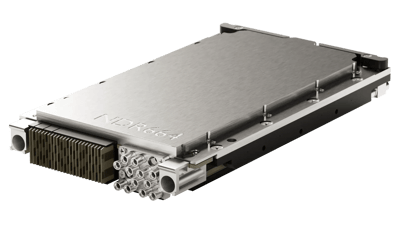
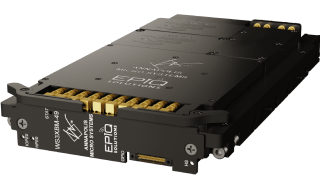









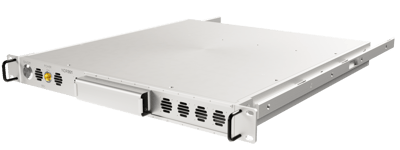
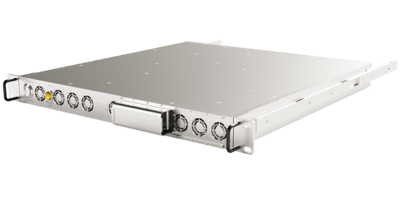


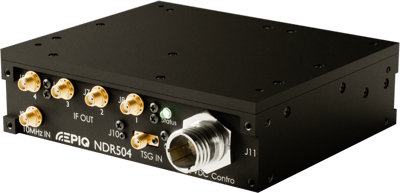


.webp?width=70&height=70&name=Vector%20(1).webp)
